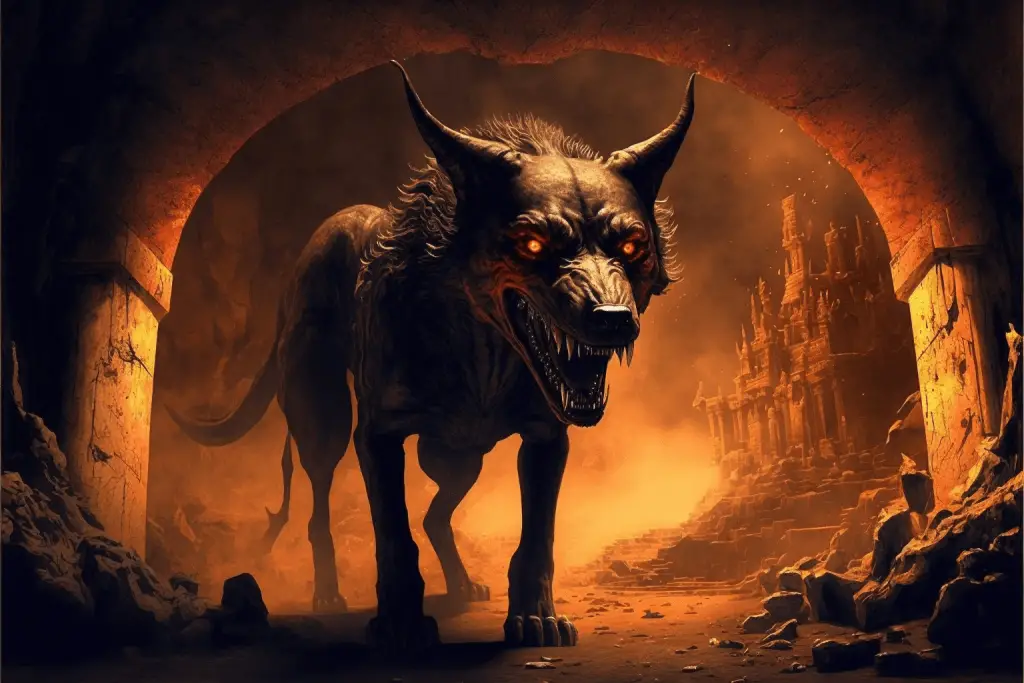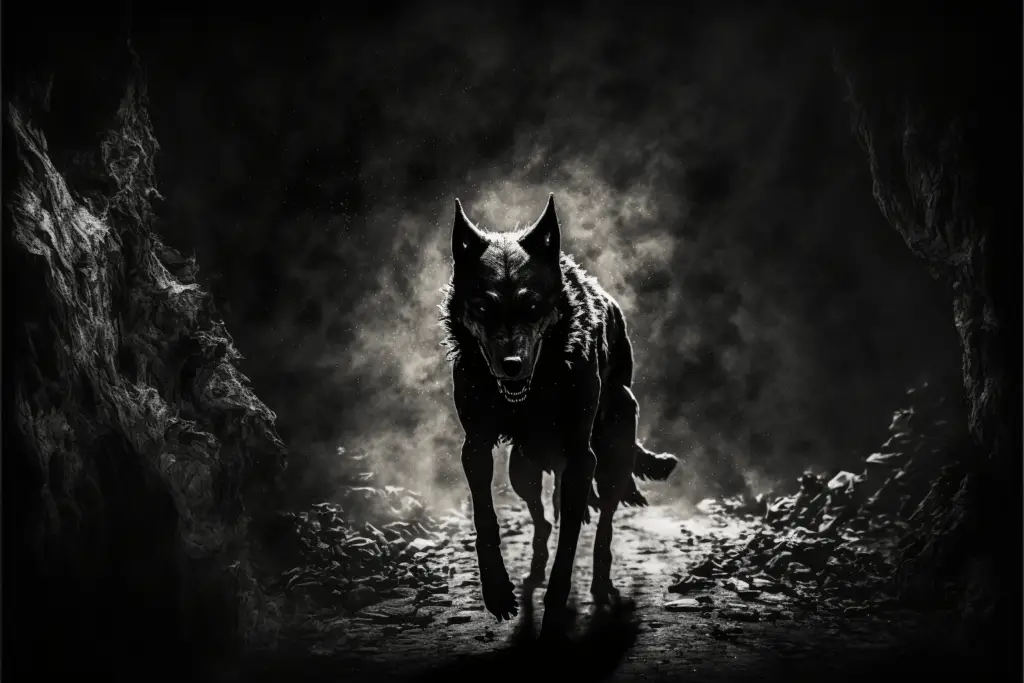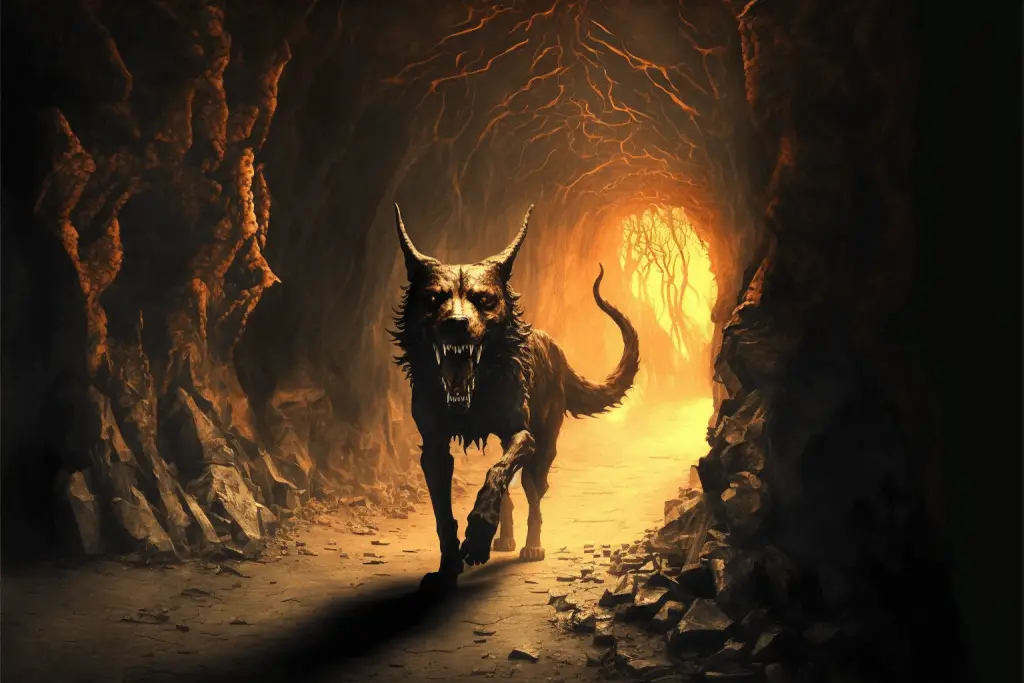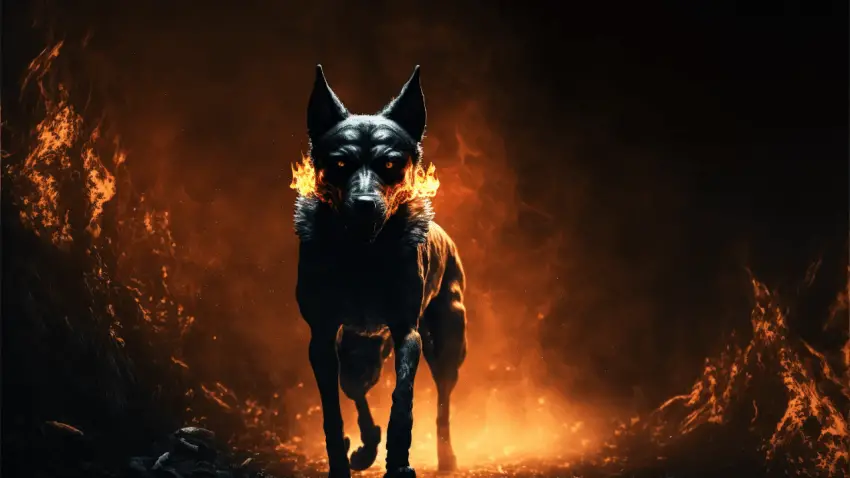Share the Lore!
By: Alex Postrado
The Black Dogs of Death
If there is a color we would most often associate with evil, it would undoubtedly be the color black — the shade of black or the absence of light, if we are being technical.
For centuries, people have used black to represent fear, mystery, negativity, and even death.
In this modern-day, it is also known to evoke — ironically — both misfortune and power.
And, perhaps, it is because of all of this that Hellhounds are often depicted as fierce, black dogs no matter the version of the story.
After all, they are literally a feared symbol of imminent death.
The lore of Hellhounds as enduring guards of the Underworld has been the stuff of myths and legends for a very long time now — even raising several, far-reaching interpretations across cultures as to what a Hellhound really is.
And hundreds of years since it was first told, here is the legendary Hellhound narrative.

The Hounds of the Underworld
As we all know, Hellhounds are mythical hounds that are tasked to guard the entrances to “the world of the dead“.
This basically makes them a faithful servant of the Devil or — depending on the belief — whoever it is that rules the Underworld.
And because of this, it is said that they commonly appear in burial grounds and graveyards.
According to most stories, Hellhounds are unusually large, typically black dogs with glowing red — or, at times, golden — eyes, razor-sharp teeth, and an odor that is similar to that of burning brimstone.
They possess shapeshifting abilities, supernatural strength, and speed, and sometimes, even have the power to communicate with humans.
Occasionally, Hellhounds are depicted to have multiple heads in one body. Other times, however, they are headless.
And in cultures that associate fire with the afterlife, flames follow them wherever they go.
Having been described to have these fearsome characteristics, it would seem reasonable to assume that all Hellhounds are evil.
But, while it is true that there are malevolent Hellhounds in anecdotal records, there still exist some claims of helpful Hellhounds, warning people of danger — and in a few cases, even protecting them from it.
So, why do most of us still link Hellhounds with malice?
Well, death is the answer.
Hellhounds are also known by the name of “The Bearers of Death”.
This is because it is believed that hearing a Hellhound howl or seeing one indicates that death is coming.
And evil Hellhounds are likely the cause of this.
But, in the case of those that are benevolent, they only forewarn the end and guide the departed souls to the place of the afterlife.
The Different Breeds of Hellhounds
During the 17th Century witch trials, Hellhound sightings had already been a thing.
Surprisingly, though, stories about hellish demon-dogs actually stretch back to a time way before that.
One of the earliest records of Hellhounds can be found in Greek mythology, in the legend of Cerberus.
By far, one of the best-known Hellhounds, Cerberus is the three-headed watchdog of the Underworld. Its monstrous appearance is further elevated by its serpent-like tail. And its main duty is to allow souls to enter and prevent them from leaving.
Another famous type of Hellhound is the black dog of English folklore. It has several classes of its own, but most of the time, they are regarded as sinister mastiffs from Hell.
In the British Isles, the black dog was given the name of Black Shuck, Old Shuck, or Doom Dog.
There are contrasting accounts regarding Black Shuck — with some, saying it is “a portent of ill omen“, and others, claiming it can be benign.
But one that is certainly dangerous to cross paths with is the Barghest.
Also spelled Bargtjest, Bo-guest, Bargest, or Barguest, this ferocious Northern England beast can shapeshift into a vanishing headless man, a headless lady, a cat, or a rabbit — as it pleases.
The Gwyllgi, on the other hand, roams around Wales.
It has “baleful breath and blazing red eyes“, and is sometimes called “The Dog of Darkness” or “The Black Hound of Destiny“.
In Devon folklore, it is the Yeth Hound that people fear.
Usually taking the form of a headless dog, it is believed to be “the spirit of an unbaptized child, which rambles through the woods at night making wailing noises.”
The Gytrash is another black dog from Northern England folklore.
This solitary Hellhound can appear in the shape of a mastiff, a mule, or a horse. Though quite feared by locals, in its dog form, it is said to guide lost travelers to the right path.
In mule form, however, it is purely spiteful.
The Church Grim of both English and Scandinavian lore can also be considered as a class of black dogs.

Also called Kyrkogrim, Kirk Grim, or Kirkonväki, this spectral hound watches over certain churches and are even believed to be the spirits of dogs, sacrificed during the building of the kirks.
Welsh mythology’s Cŵn Annwn or Hounds of Annwn are also related to black dogs as far as heralding death is concerned.
However, they are commonly depicted as white dogs with red ears, mainly hunting on particular nights, namely: the eves of St. Martin, St. John, St. Agnes, St. David, St. Michael the Archangel, All Saints, Christmas, New Year, and Good Friday.
Furthermore, in Norse mythology, the Underworld’s bloodstained guard dog is known as Garmr or Garm.
The Hellhound of Central American folklore is — alternately — called the Cadejo.
According to the lore, there are two of them: the white and the black — which, in other words, are just the good, protecting Cadejo, and its evil, killing counterpart.
Catalan myth’s Dip is also another malignant Hellhound and it distinctly sucks the blood out of a human as its way to kill.
There are a lot more breeds of Hellhounds all over the world. But these few basically make up the “most notorious list” we’ve so far come to know.

Do Hellhounds Exist?
Several people from all over the world and throughout history claim to have seen a Hellhound of some kind, at least once in their lives.
Some have even made a list of the alleged weaknesses of the devilish dogs.
And the specifics commonly include iron, silver, salt, religious icons, and prayers.
Just by looking at that short list of instruments to defeat Hellhounds, it is easily apparent how religious beliefs have — indeed —helped set the ball rolling for the lore that had made many anxious to visit graveyards for hundreds of years.
That is despite the fact that until now, there remains no substantial evidence to prove that Hellhounds actually exist in the physical world.
Still, some people would swear blind that Hellhounds are real.
In fact, there have been recent alleged sightings around a few U.S. States, as well as in the Bavarian town of Vilseck in Germany.
But, until there is proof, the existence of Hellhounds would remain shrouded in mystery.
The kind of mystery we can only — probably — solve once it is our fateful time to face them.
References:
The terrifying story of the 'hell hound' Hellhound - Mythological Creature Hellhound - Myths Hellhound - Folklore Hellhounds - Types Hellhounds - Weakness
